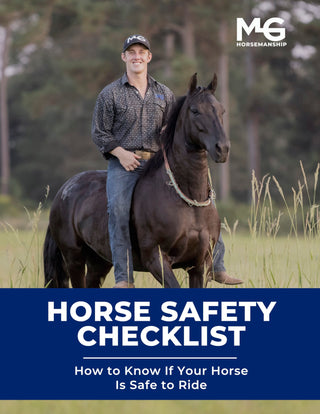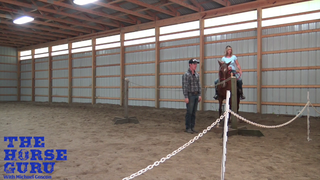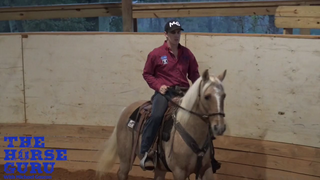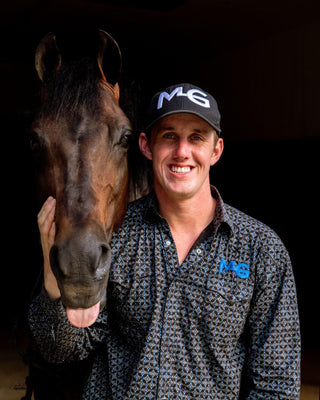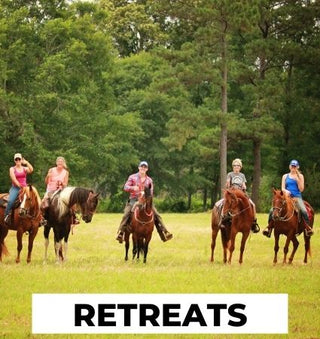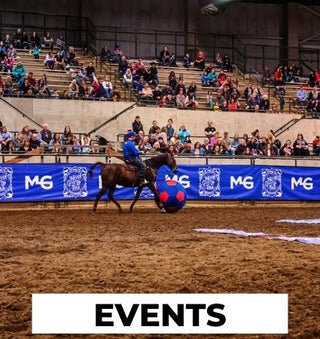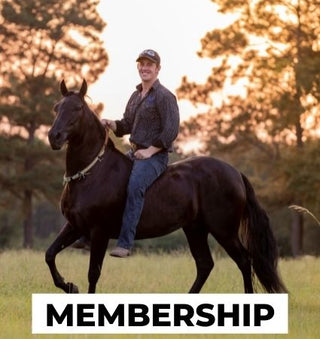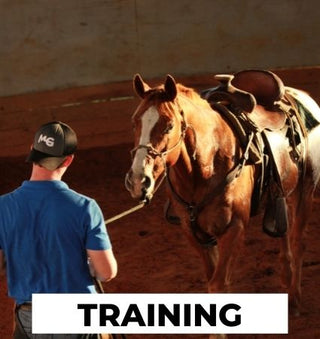Watch the Video Here or continue reading below!
Learn how to build softness, attention, and precise control with your horse using Michael Gascon’s proven Respect Series methods. In Day 2 of this clinic with Monty, Michael walks us through advanced groundwork and under-saddle maneuvers like backing, side passing, flexing, and handling resistance with clarity, patience, and consistency.
Building a Foundation of Respect: The Power of Groundwork
Backing From the Ground Using Rope Cues
Backing begins with a simple but purposeful downward whipping motion using the lead rope, allowing the knot to gently land on the horse’s nose. This simulates the feel of rein pressure from the saddle, teaching the horse that pressure on the nose equals backing up.
Key takeaway: Groundwork mirrors what you’ll ask in the saddle. Backing with intention prepares your horse for under-saddle responses.
Undivided Attention: Not Just Lunging
Why We Don’t Call It Lunging
Michael refers to this phase of training as "undivided attention" rather than lunging. This isn’t just about movement—it's about focus. Eye contact and body position help demand the horse's mental engagement, which is critical for safety and performance.
Training tip: Don’t let the horse get dull from endless circles. Demand awareness. If their eyes are on you, their mind will be too.
Steering, Sending, and Positioning
Where You Stand Matters
By staying just behind the shoulder and using your tools with rhythm and timing, you drive the horse forward rather than pulling or chasing. Too far forward and you block; too far back and you lose control.
Correct position = behind the drive line, eyes on the horse’s face, assertive but not aggressive.
Safety First: Rope Management and Desensitizing
Keep Your Hands and Body Safe
Michael cautions against holding coils in your hand, as they can tighten quickly if the horse bolts. Also, when desensitizing, never give enough slack for the horse to kick out or turn around on you. Controlled pressure and proper flag use are essential to avoid getting chased or run over.
Introducing the Side Pass Under Saddle
Spirals and Flexing First
Before side passing, test the horse’s steering and softness. Flex from the poll, disengage the hindquarters, and ensure you have face and hip control. If the horse is bracing or fussy, stay calm and consistent. The calmer you are, the sooner the horse will stop arguing.
Remember: A resistant horse needs to lose the belief that arguing will work.
Leg, Rein, and Crop: Teaching the Side Pass
Timing and Pressure Are Everything
-
Outside leg cues the movement.
-
Inside rein keeps them bent toward the direction you want.
-
Crop backs up the leg if the horse ignores the cue.
Michael emphasizes using the crop behind the leg when necessary—not to punish, but to reinforce the message.
When Resistance Appears: Stay Consistent
Horses argue when they think they can win. If they’ve had past success refusing to trailer load or avoiding obstacles, they view training as a negotiation.
Solution: Outlast the resistance. Be more persistent than they are stubborn. Don’t fight—teach.
Refining the Movement: Backing in a Circle
Using the Outside Leg and Rein
Once the side pass is understood, riders can begin backing in a circle using leg and rein cues. This engages both the shoulders and hindquarters while reinforcing softness and control.
Adjusting Equipment for Greater Softness
Looser vs. Tighter Halter
Small changes in tack positioning can make a big difference. A halter that's too snug gives the horse something to brace against. A looser setup allows for more subtle, responsive pressure—especially with resistant horses.
Play and Reward: The Power of Positive Endings
Why You Should End On a Good Note
Michael emphasizes the importance of ending sessions with softness and compliance. Don’t stop when the horse is tense or reactive—end on a light note and offer praise. Then, switch gears and play a little—like kicking a soccer ball—to let the horse and rider decompress.
Final Thoughts: Progress Through Patience
This training session with Monty showcases how effective communication, strategic groundwork, and consistent under-saddle cues can reshape even the most resistant horse. Whether you're dealing with a green colt or retraining an older horse, the Respect Series gives you the tools to earn trust, attention, and lightness in every ride.



